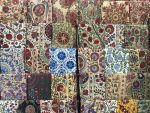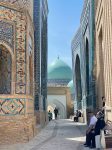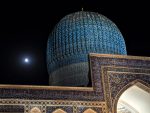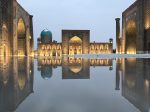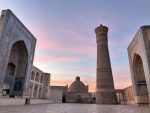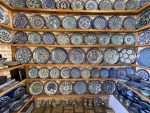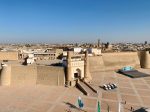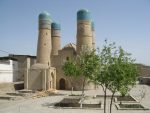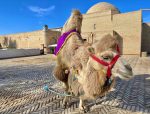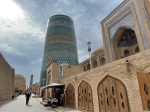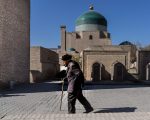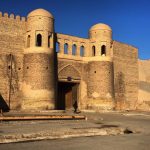Uzbekistan’s Silk Road Oasis Cities
Why you should visit Samarkand, Bukhara, AND Khiva!
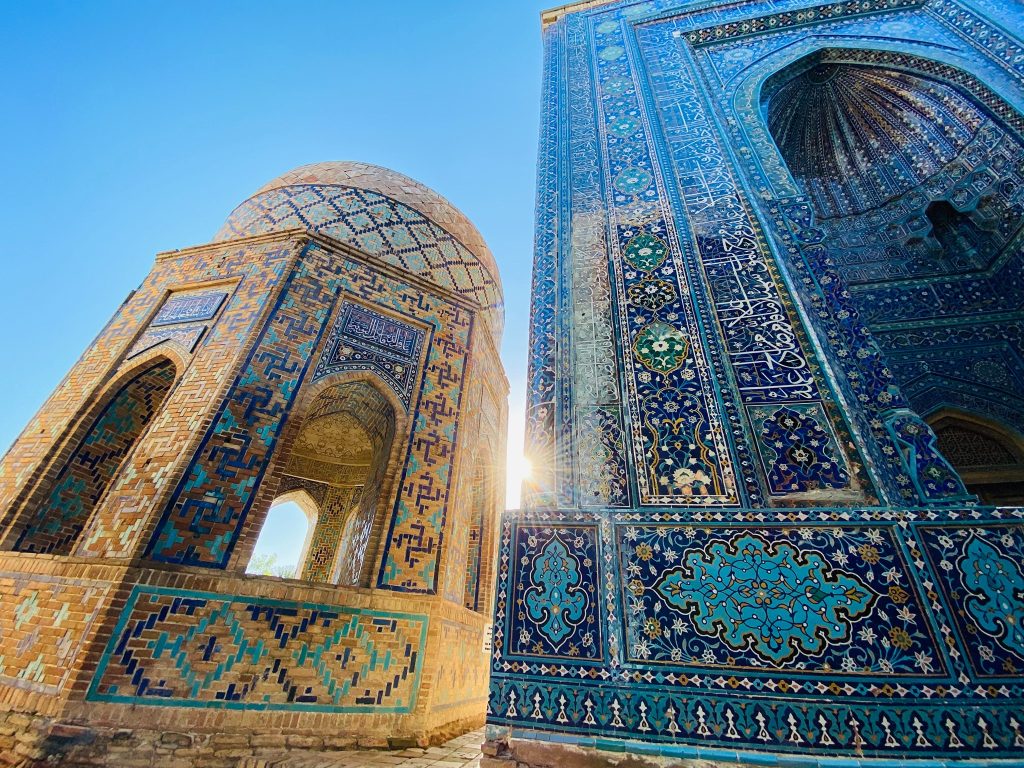
One question we often get at MIR is whether it is necessary to visit all three of the UNESCO-listed Silk Road oasis cities in Uzbekistan. These are (going east to west) Samarkand, Bukhara, and Khiva. The short answer is that a trip to Uzbekistan that covers just two of the three oasis cities is still worthwhile. But if you have the time, including all three is definitely better. It is precisely for that reason that most of our flagship tours to Central Asia spend time in all three, including Journey Through Central Asia, Backstreets & Bazaars of Uzbekistan, Outposts of the Silk Road, Silk Route Odyssey, and Essential Uzbekistan. Each of those tours features Samarkand, Bukhara, and Khiva but approaches them in different ways and in combination with other neighboring countries and destinations. These include small group tours, private options, and rail journeys by private train.
So, why are our tours structured this way? It is partly because, for most travelers, getting to Uzbekistan involves long flights. After trekking halfway around world, why not make the most of your time in the region? But really there are deeper and better reasons to visit each of these spectacular cities. The fact is that while outwardly similar (all feature spectacular, UNESCO-listed Islamic architecture), Samarkand, Bukhara, and Khiva all have strikingly different histories, cultures, layouts, and styles. Visiting one is definitely not the same as having visited them all. Read on to learn a bit more about each.
1. Samarkand – Monumental Architecture that Cannot be Missed
Samarkand is the largest of these three cities, with a population of over 500,000. Locals are a mix of Turkic-speaking Uzbeks and Persian-speaking Tajiks. The division between the groups is often quite blurry, with many individuals and families fluent in both languages. Samarkand’s history is ancient, stretching potentially all the way back to the 8th century BCE or beyond. The main draw of Samarkand, and for many the main draw of Central Asia as a whole, is the iconic Registan. The three massive madrassas that make up this complex were built by the Timurids and Janids in the 15th and 17th centuries. They are among the most monumental and impressive examples of Islamic architecture anywhere on the planet and they should not be missed.
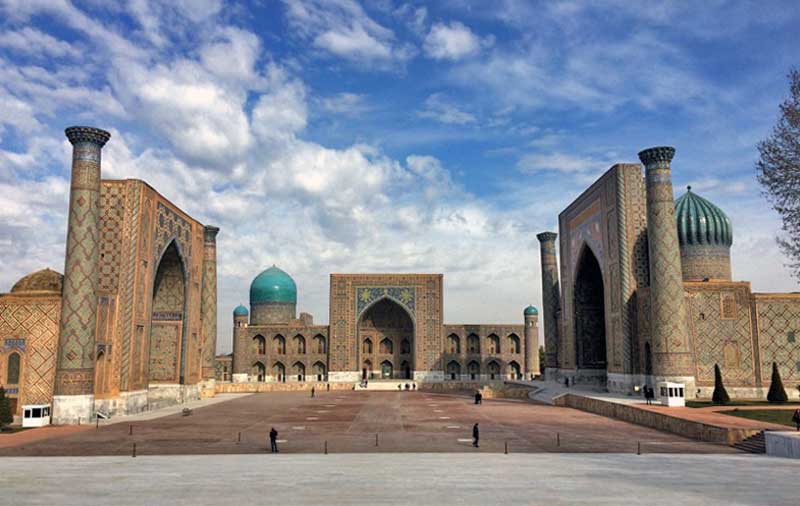
Aside from the Registan, the rest of the city is dotted with other excellent examples of blue-domed Timurid mosques, madrassas, and mausoleums, including the tomb of Tamerlane. While spread out and interspersed with more modern parts of the city, these sites arguably make Samarkand the most important of the three Silk Road oases. There is also a lot to do and see beyond architecture. Arts and crafts like silk paper, woven carpets, and block-printed fabrics are still thriving in the city. It is also a great place to try the bagel-like flatbread for which it is locally renowned.
(click image to view larger photo)
2. Bukhara – A Minaret that Survived the Mongols
Bukhara is much smaller than Samarkand, around half the size with just under 300,000 inhabitants. The city is similar to Samarkand in that both have an ancient heritage stretching back thousands of years and are home to mixed populations of Tajiks and Uzbeks. Those similarities aside, the cities feel quite different. Bukhara is much more compact, and the architectural highlights are laid out in a relatively small and walkable area. Traditional neighborhoods with mudbrick homes featuring lush courtyards are still largely intact and surround the historic center. One of these neighborhoods was for centuries a center of Jewish culture in Central Asia, and is still home to synagogues, a Jewish cemetery, and a small community of worshippers. All of this means that Bukhara is a great place explore on foot while getting a sense of both the history and Bukharan life in the modern era.
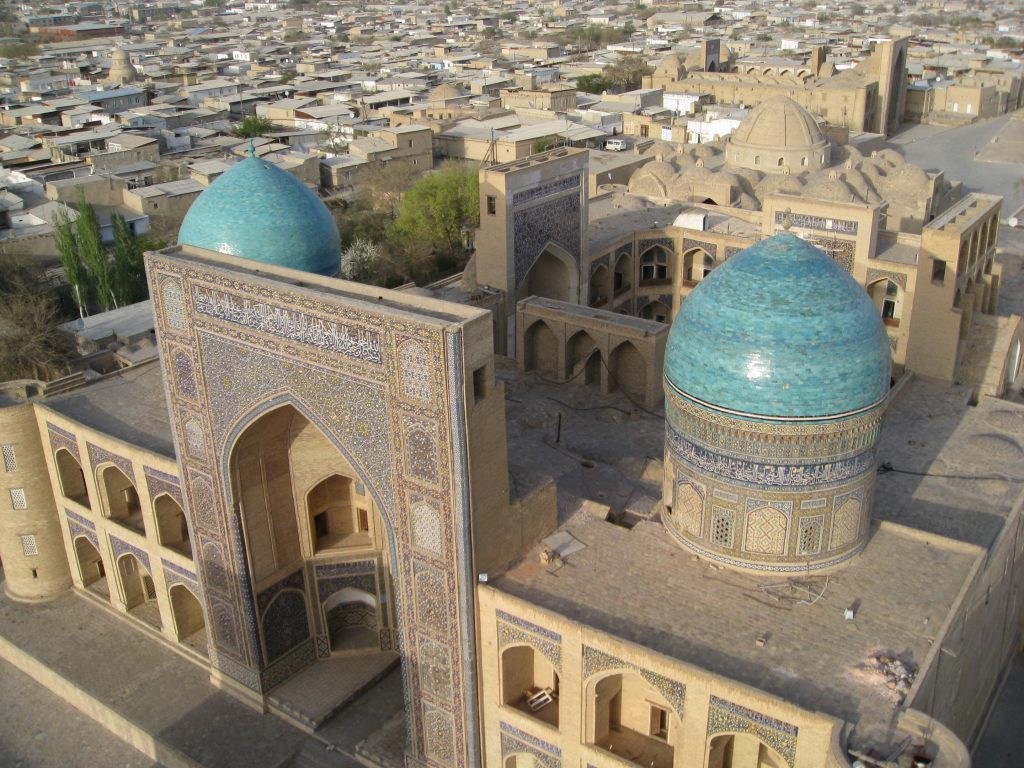
Some of Bukhara’s architecture is also quite unique. The Samani Mausoleum is one of the oldest standing structures in the region, dating back to the 10th century CE and exhibiting a blend of Zoroastrian, Buddhist, and early Islamic styles. The Kalon Minaret was erected in the 12th century CE and survived the invasion of Genghis Khan around 100 years later. Both are still important landmarks in the city. The walled Ark citadel looms over the city and was for centuries a fortress and center of power in Bukhara. The infamous “bug pit” prison is located nearby. British officers Stoddart and Connolly were imprisoned there until their execution in 1842 in one of the Great Game’s more brutal episodes.
Bukhara was for millennia an important trading center, and this tradition lives on in its winding bazaars, many still in centuries-old buildings filled with Uzbek and Tajik handicrafts and more. Aside from architecture, strolling, and shopping, Bukhara is also a great place to learn about local culture through cooking lessons, handicrafts demonstrations, and performances of traditional music. When we hear from our travelers about which city they enjoyed most, we often hear that Bukhara was the favorite.
(click image to view larger photo)
3. Khiva – A Walled City Amidst Seas of Sand
Khiva is the smallest of the Uzbek Silk Road oases, with a population of under 100,000. It is also the farthest flung, located at the far northwestern extreme of Uzbek and Persian influence in Central Asia. Any farther west was traditionally home to Karakalpak nomads. The Kazakhs live to the north and the Turkmens to the south. While the Amu Darya River has kept much of the nearby countryside green and cultivable (at the expense of the Aral Sea), sparsely populated desert is close at hand here. It is in part because of this isolation that Khiva looks and feels different than its larger cousins to the east. Even the dialect here is a bit different, influenced by Turkmen and related languages.
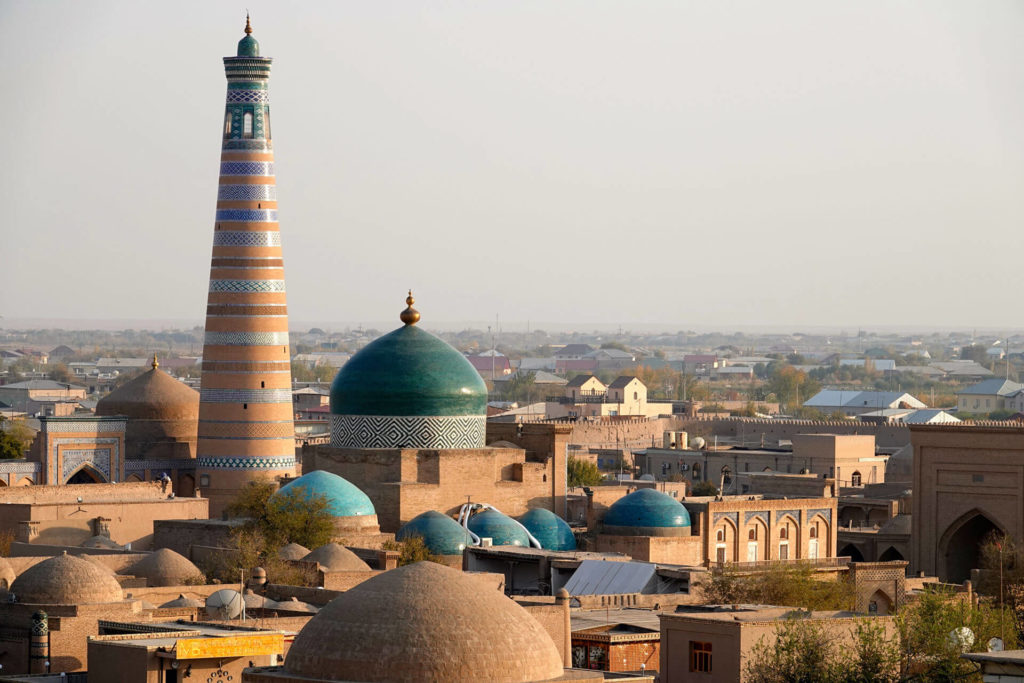
Most of Khiva’s historic architecture is confined to the Ichon Qala, a densely packed old town that is surrounded by ancient city walls. The area measures just a quarter of a mile from east to west and a half mile from north to south. That small size belies the impressive number of monuments found within, including a palace, a fort, and dozens of mosques, madrassas, and mausoleums. There are several vantage points within the old town where one can get a bird’s eye view out over the surrounding minarets, tiled domes, and mudbrick roofs. This makes it arguably the most photogenic of the three cities, especially in terms of cityscape photography. Khiva is also the best place in Uzbekistan to listen to Khorezmian music or to try shivit oshi, a dill-infused dish of green noodles. For those looking for a bit of adventure, a series of atmospheric and ruined desert fortresses (more archaeology than architecture at this point) can be found strewn across the badlands and dune fields that lie just beyond Khiva, often with camels grazing the thorny scrub nearby.
(click image to view larger photo)
Travel to Uzbekistan with MIR
Uzbekistan is like a second home to many of us at MIR, and with an affiliate office on the ground in Tashkent and nearly 40 years of in-country experience, we are the best in the business. Contact our team of expert travel planners to learn more about our small group tours and rail journeys by private train that feature Samarkand, Bukhara, and Khiva. Or, if you prefer to travel independently, we would love to design a custom trip just for you.
If you are intrigued and would like to read more about travel in Uzbekistan, check out our blog on our favorite experiences in the country. We have another on UNESCO-listed sights and cultural practices in Uzbekistan, and a third on the best time to visit Uzbekistan (and elsewhere in the region).
Chat with one of our destination specialists now!
